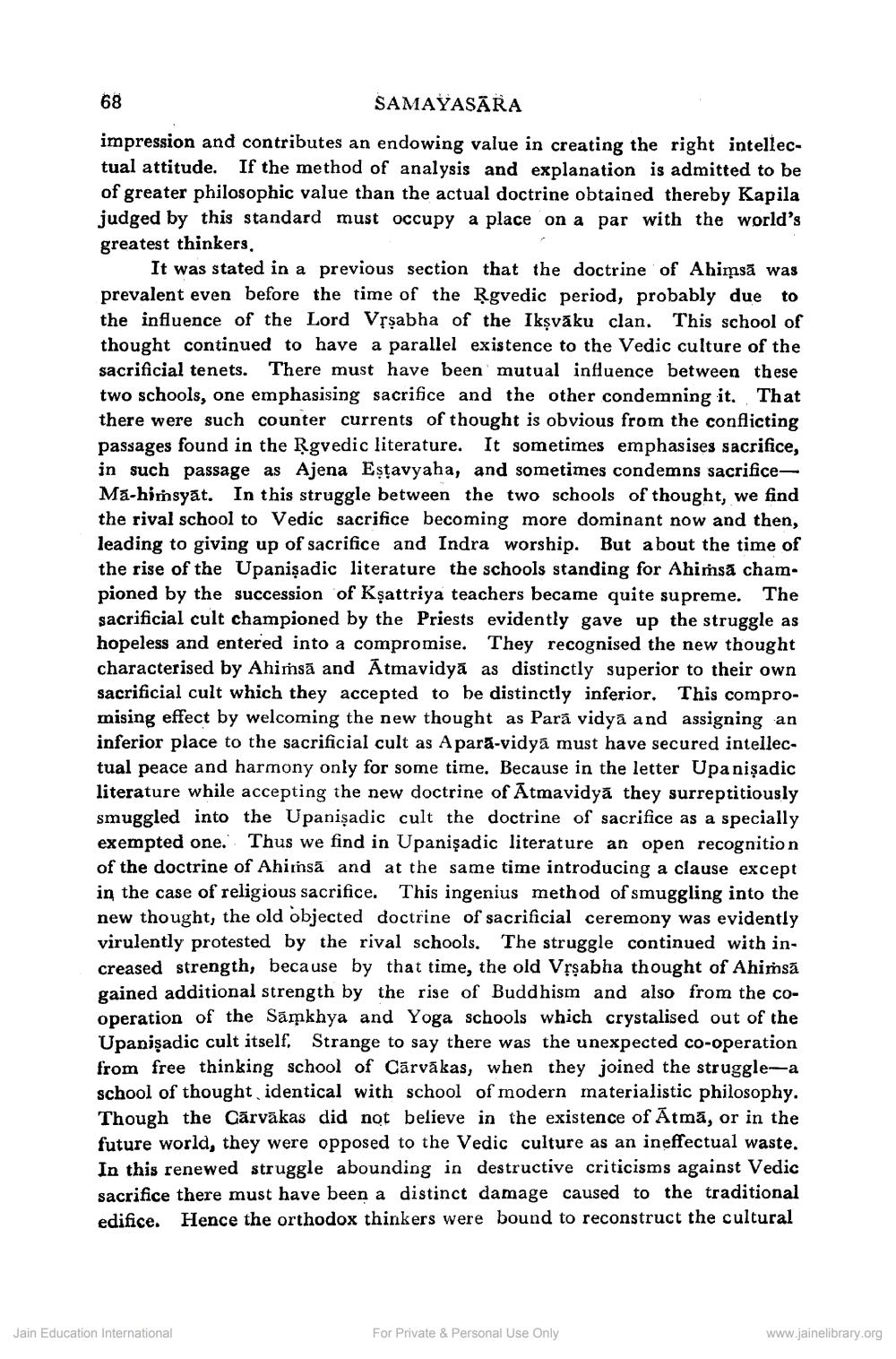________________
68
SAMAYASARA
impression and contributes an endowing value in creating the right intellectual attitude. If the method of analysis and explanation is admitted to be of greater philosophic value than the actual doctrine obtained thereby Kapila judged by this standard must occupy a place on a par with the world's greatest thinkers.
It was stated in a previous section that the doctrine of Ahimsa was prevalent even before the time of the Ṛgvedic period, probably due to the influence of the Lord Vṛṣabha of the Ikṣvāku clan. This school of thought continued to have a parallel existence to the Vedic culture of the sacrificial tenets. There must have been mutual influence between these two schools, one emphasising sacrifice and the other condemning it. That there were such counter currents of thought is obvious from the conflicting passages found in the Rgvedic literature. It sometimes emphasises sacrifice, in such passage as Ajena Eṣṭavyaha, and sometimes condemns sacrificeMa-himsyat. In this struggle between the two schools of thought, we find the rival school to Vedic sacrifice becoming more dominant now and then, leading to giving up of sacrifice and Indra worship. But about the time of the rise of the Upanisadic literature the schools standing for Ahimsa championed by the succession of Kṣattriya teachers became quite supreme. The sacrificial cult championed by the Priests evidently gave up the struggle as hopeless and entered into a compromise. They recognised the new thought characterised by Ahimsa and Atmavidya as distinctly superior to their own sacrificial cult which they accepted to be distinctly inferior. This compromising effect by welcoming the new thought as Para vidya and assigning an inferior place to the sacrificial cult as Apară-vidya must have secured intellectual peace and harmony only for some time. Because in the letter Upanisadic literature while accepting the new doctrine of Atmavidya they surreptitiously smuggled into the Upanisadic cult the doctrine of sacrifice as a specially exempted one. Thus we find in Upanisadic literature an open recognition of the doctrine of Ahimsa and at the same time introducing a clause except in the case of religious sacrifice. This ingenius method of smuggling into the new thought, the old objected doctrine of sacrificial ceremony was evidently virulently protested by the rival schools. The struggle continued with increased strength, because by that time, the old Vṛṣabha thought of Ahimsā gained additional strength by the rise of Buddhism and also from the cooperation of the Samkhya and Yoga schools which crystalised out of the Upanisadic cult itself, Strange to say there was the unexpected co-operation from free thinking school of Cārvākas, when they joined the struggle-a school of thought identical with school of modern materialistic philosophy. Though the Carvākas did not believe in the existence of Atma, or in the future world, they were opposed to the Vedic culture as an ineffectual waste. In this renewed struggle abounding in destructive criticisms against Vedic sacrifice there must have been a distinct damage caused to the traditional edifice. Hence the orthodox thinkers were bound to reconstruct the cultural
Jain Education International
For Private & Personal Use Only
www.jainelibrary.org




